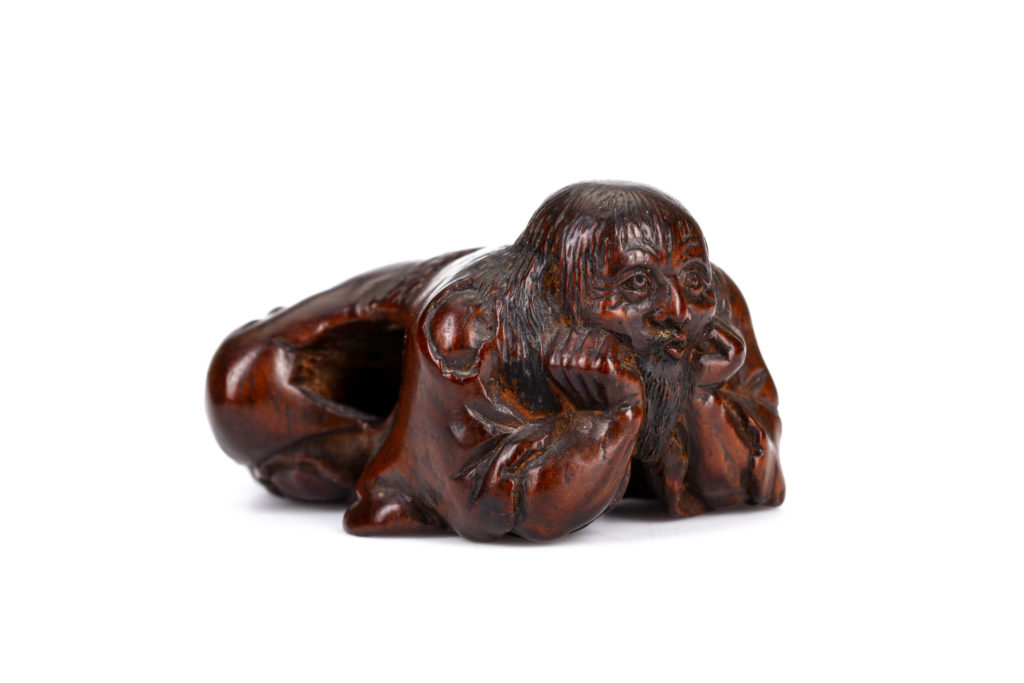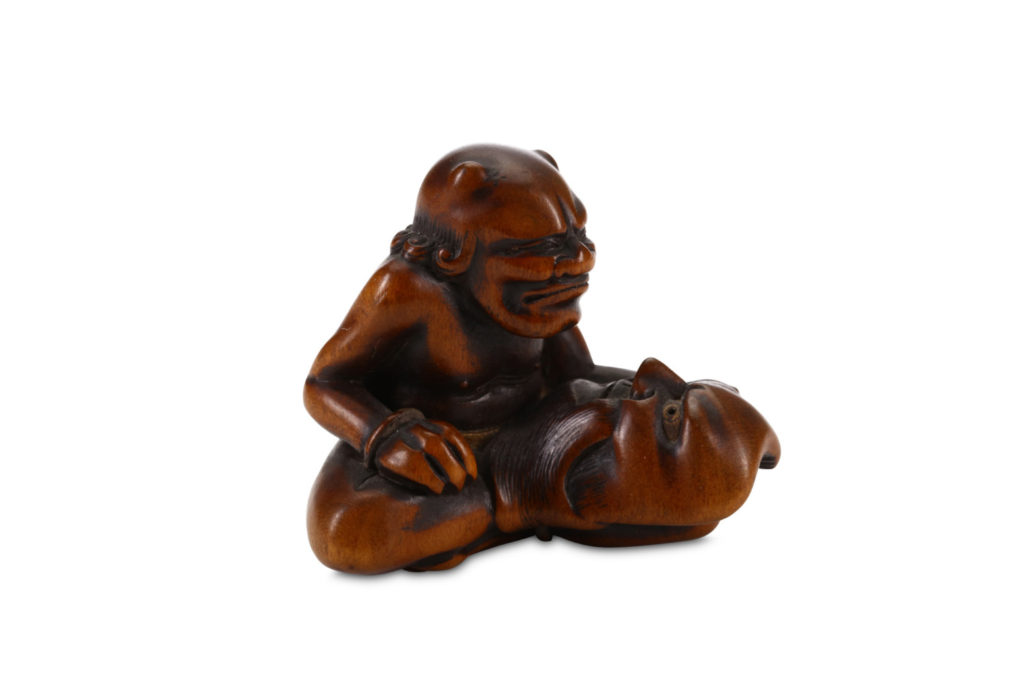Miniature Masterpieces: Five Reasons to Collect Netsuke
Netsuke are small in size but immense in cultural significance. These intricately carved toggles, once used as practical accessories in traditional Japanese dress, have evolved into coveted objects of art, admired by collectors and scholars across the globe.
Japanese netsuke offer a unique window into Edo period society and craftsmanship, blending utility with extraordinary artistic expression. Below, we explore five reasons why collectors continue to be captivated by these miniature masterpieces.

Compactness and Portability
Netsuke are typically no more than 3cm in height, making them not only discreet and easy to transport but also ideal for collectors who appreciate objects that can be displayed in even the smallest of spaces. Their miniature scale belies the skill and complexity they contain, making them a rewarding focus for connoisseurs of Japanese art.
Many important private collections of netsuke have survived precisely because of their size. Stories of these small objects being hidden, smuggled or protected in times of upheaval underline their intimate value. Collectors are often drawn to this blend of delicacy and resilience.
A Form Entirely Unique to Japan
Netsuke emerged as functional objects in 17th century Japan. Worn with traditional kimono, which lacked pockets, they acted as toggles to suspend small containers for medicine, tobacco or personal items. The cords were passed through a hole in the netsuke and secured at the waist sash (obi).
These pieces had to be comfortable, durable and visually pleasing. Much like cufflinks today, they became a subtle indicator of taste and status, especially among merchants who could not wear luxurious robes by law but could demonstrate style through accessories.
Over time, netsuke transcended their utility, evolving into a form of sculptural art unique to Japan, independent of any comparable Chinese or Korean tradition.

A rare dark wood netsuke of a Shunkan by Miwa. Early 19th century.
Richness and Variety of Subject
Although small, netsuke display immense creativity and thematic variety. Their compact form challenged carvers to condense folklore, religion, nature, daily life or satire into just a few centimetres of ivory, wood or stag antler. The result is an art form that rewards close study and interpretation.
Subjects range from animals and mythical creatures to gods, historical figures and domestic scenes. Many later examples include humour or social commentary, echoing the broader trends seen in ukiyo-e prints and Japanese painting. This diversity means collectors can build personal collections based on theme, material, period or even artist.
Netsuke of a monkey and her young. 19th Century.
Exquisite Craftsmanship
Netsuke were traditionally made by highly skilled artisans, many of whom trained as Buddhist sculptors or worked in musical instrument production. As their popularity grew, makers began signing their work and building reputations that are still recognised today.
Not all netsuke are signed, however, and expertise is required to authenticate the maker and period. Copying of famous signatures was common, so connoisseurship plays a key role in understanding and evaluating these pieces. Fine examples display detailed carving, harmony of form and tactile balance.
A wood netsuke of an Oni and a mask.19th Century.
A Global Community of Collectors
Interest in netsuke spread internationally following Japan’s opening to the West in the mid-19th century. While traditional dress declined, foreign demand rose. Netsuke were admired for their craftsmanship, individuality and portability, and became highly sought-after among Western collectors.
Today, collectors and scholars continue to share their knowledge through study groups and exhibitions. Institutions such as the British Museum hold extensive collections, and the International Netsuke Society hosts events that bring together experts from around the world.
This international interest ensures netsuke remain a vibrant part of the market for Japanese works of art. Their size, symbolism and intricacy make them appealing not only to established collectors but also to newcomers seeking a rich and rewarding collecting journey. A netsuke of Daikoku as a rat-catcher, signed Kaigyokusai Masatsugu. 19th Century.
A netsuke of Daikoku as a rat-catcher, signed Kaigyokusai Masatsugu. 19th Century.
Thinking of Selling Netsuke or Japanese Works of Art?
If you own a collection of netsuke or a single Japanese object of interest, our specialists are available to provide a complimentary valuation.
Contact the Asian Art department at asian@chiswickauctions.co.uk or submit an Online Valuation.
We are delighted to advise on individual items or entire collections of Japanese art.